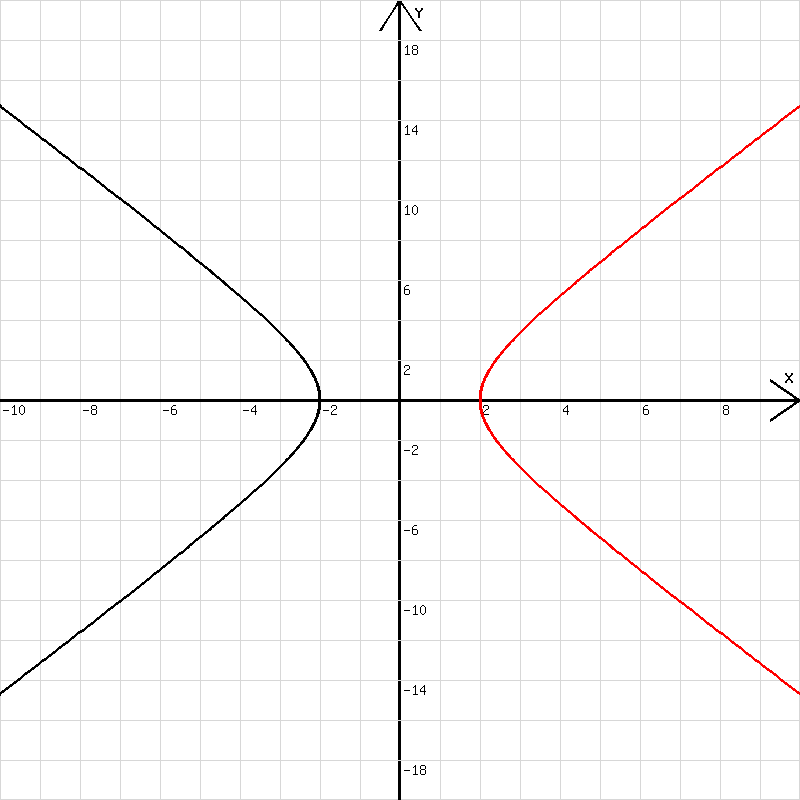
Ellipse, Hyperbel
Mit d=d+0,01; x=3*cos(d); y=2*sin(d); l=d wurde die Ellipse in der Abb.1 aufgenommen.
Aus x=3*cos(d); y=2*sin(d); folgt: x/3 =cos(d), y/2 = sin(d) → x2 / 9 + y2 /4 = 1 (sin(d)2 + cos(d)2 = 1 !)

Abb. 1
Mit d=d+0,01; x=2*cosh(d); y=3*sinh(d); u=-2*cosh(d); v=3*sinh(d) wurde die Hyperbel in der Abb. 2 gezeichnet.
Für d wurde als Anfangswert -4 eingetragen.
sinh(d) = (ex – e-x)/2, cosh(d) = (ex + e-x)/2 ,
cosh(d) = x/2, sinh(d) = y/3
cosh(d)2 - sinh(d)2 = 1 → x2 / 4 - y2 /9 = 1
Hiermit wird die Namensgebung „Sinus-hyperbolicus und Kosinus-hyperbolicus” für sinh und cosh verständlich.

Abb.2